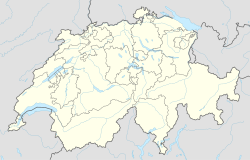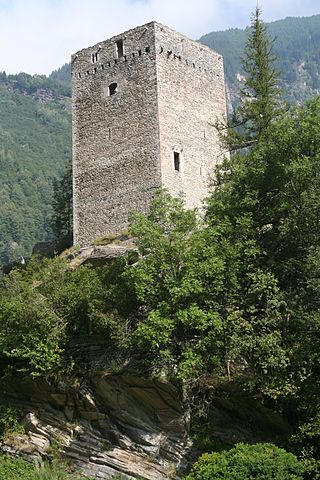
Castelmur Castle is a castle in the village of Bondo in the municipality of Bregaglia of the Canton of Graubünden in Switzerland. It is a Swiss heritage site of national significance. The fortifications at Castelmur may be, after the Three Castles of Bellinzona, the most important example of medieval valley fortifications in modern Switzerland.
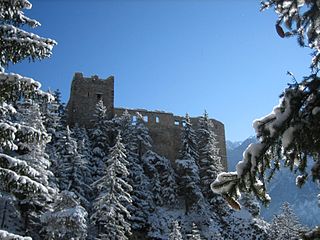
Belfort Castle is a ruined castle in the municipality of Brienz/Brinzauls of the Canton of Graubünden in Switzerland. It is a Swiss heritage site of national significance.

Greifenstein Castle is a ruined castle in the municipality of Filisur of the Canton of Graubünden in Switzerland. It is included on the register of the Swiss Inventory of Cultural Property of National and Regional Significance.

Brandis Castle or Maienfeld Castle is a castle in the municipality of Maienfeld of the Canton of Graubünden in Switzerland. It is a Swiss heritage site of national significance.

Rietberg Castle is a castle in the municipality of Pratval of the Canton of Graubünden in Switzerland. It is a Swiss heritage site of national significance. It was the site of the murder of Pompeius Planta in 1621 by Jörg Jenatsch during the conflicts between Catholics and Protestants known as the Bündner Wirren.

Hochjuvalt Castle is a castle in the municipality of Rothenbrunnen of the Canton of Graubünden in Switzerland. It is a Swiss heritage site of national significance.

Sogn Parcazi Castle and Church is a ruined castle and fortified church in the municipality of Trin of the Canton of Graubünden in Switzerland. It is a Swiss heritage site of national significance.

Jörgenberg Castle is a castle in the municipality of Waltensburg/Vuorz of the Canton of Graubünden in Switzerland. It is a Swiss heritage site of national significance.

Planta-Wildenberg Castle is a castle in the municipality of Zernez of the Canton of Graubünden in Switzerland. It is a Swiss heritage site of national significance.

Belmont Castle is a ruined castle near Flims, Graubünden, Switzerland. It was the home of the Barons of Belmont.

Heinzenberg Castle German: Burg Heinzenberg is a ruined castle in the municipality of Cazis in the Viamala Region of the canton of Graubünden in Switzerland.

Baldenstein Castle is a castle in the municipality of Sils im Domleschg of the Canton of Graubünden in Switzerland.

San Peder Castle is a ruined stone tower and a ruined church in the former municipality of Sent of the Canton of Graubünden in Switzerland.

Guardaval Castle is a ruined castle in the municipality of Madulain of the Canton of Graubünden in Switzerland.

The Planta Tower is a tower house in the center of the municipality of Zuoz in the Canton of Graubünden in Switzerland.
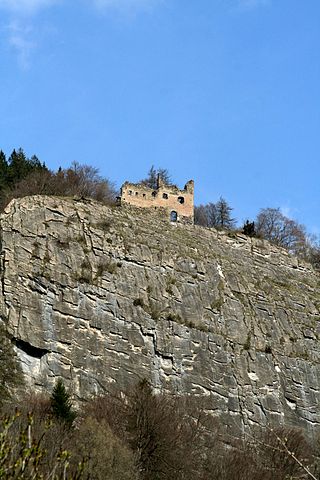
Lichtenstein Castle is a ruined castle in the municipality of Haldenstein of the Canton of Graubünden in Switzerland.

Wynegg Castle is a ruined castle in the municipality of Malans of the Canton of Graubünden in Switzerland.

Strassberg Castle is a ruined castle in the municipality of Churwalden of the Canton of Graubünden in Switzerland.

Rhäzüns Castle is a castle near Rhäzüns, Graubünden, Switzerland.
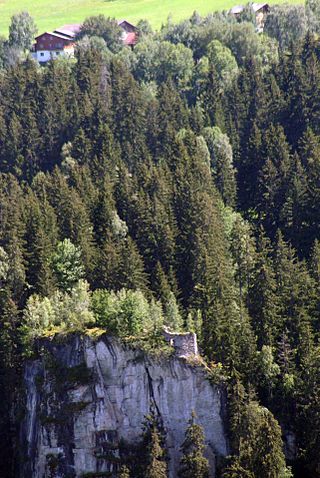
Schwarzenstein Castle is a ruined castle in the municipality of Obersaxen Mundaun of the Canton of Graubünden in Switzerland.


